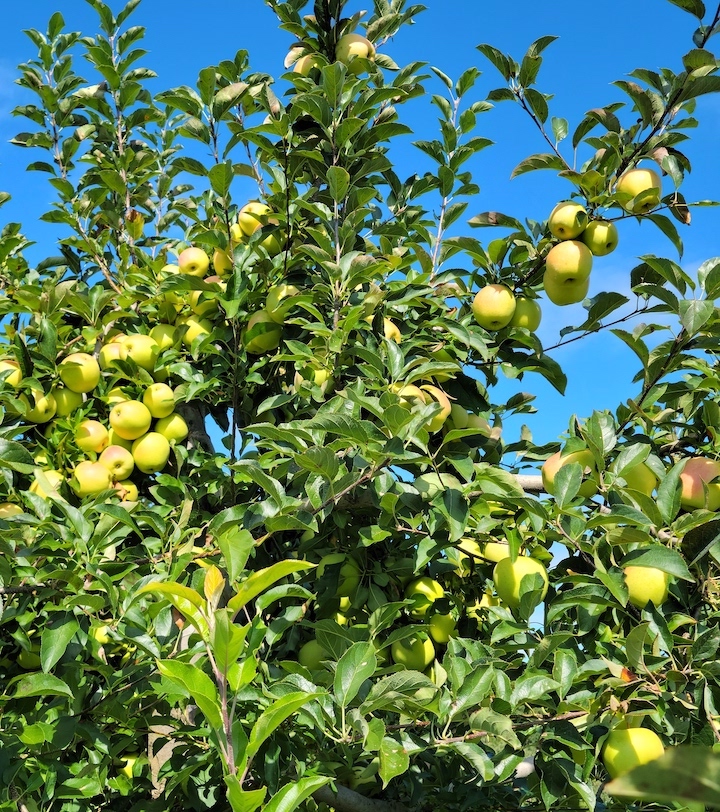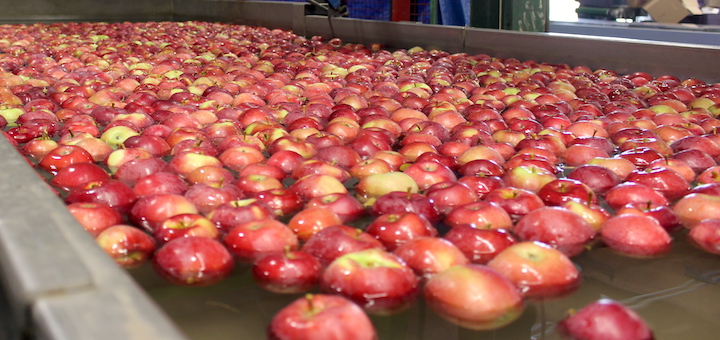
WHEN IT COMES TO APPLES and climate change, people tend to think of major weather events. Three significant events combined to negatively impact New England’s orchards in 2023:
- A deep freeze (colder than -10°F) during a single night last February 4 decimated the region’s peach crop. In most cases the trees survived, but not the nascent buds.
- After a promising bloom, a late frost May 18 killed the budding apples in many New England orchards. Depending on location, some orchards were spared completely, while others lost some or all of their apple crops before the season began. Region-wide, the result was about half of a normal crop.
- The heavy rains of summer added misery to diversified farms that grow field crops to supplement their tree fruit. The final indignity: it rained nearly every weekend last fall, the critical time many small orchards and pick-your-owns rely on for much of their year’s income.
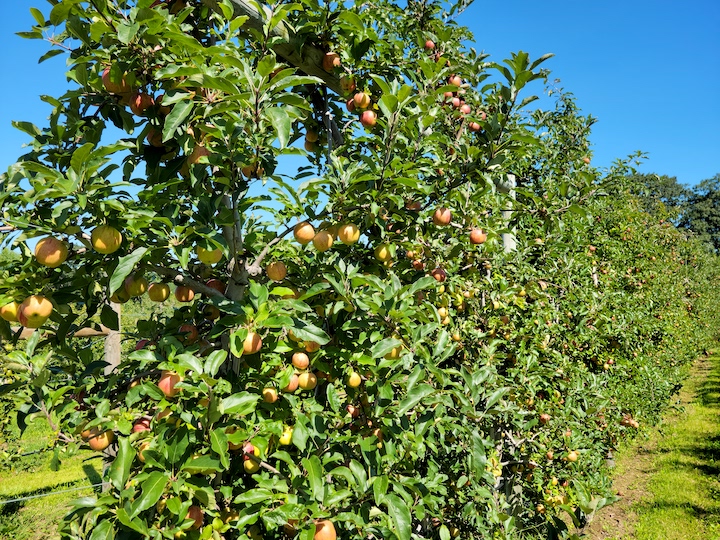
THE THREAT OF BAD WEATHER is nothing new for farmers, of course. Poor weather during pollination season reduced the region’s apple crop by half in 1998. Some orchards lost crops in back-to-back years, to hail in 2009 and frost damage in 2010.
Older farmers and previous generations can point to earlier disasters: notably the deep freeze of the winter of 1933-34, which killed off more than one million Baldwin trees as well as thousands of New England Gravenstein and Northern Spies. Baldwins were previously hit hard by freezes in the 1830s and 1850s, and the winter of 1903-04 was so severe that Rhode Island’s Narragansett Bay froze over, and many apple trees died.
The Great Hurricane of 1938 knocked millions of apples off New England’s trees and uprooted entire orchards. Rarely does a year go by without at least a few New England orchards having to cope with frost or hail damage or some other weather-related disaster. The vagaries of weather are an occupational hazard.
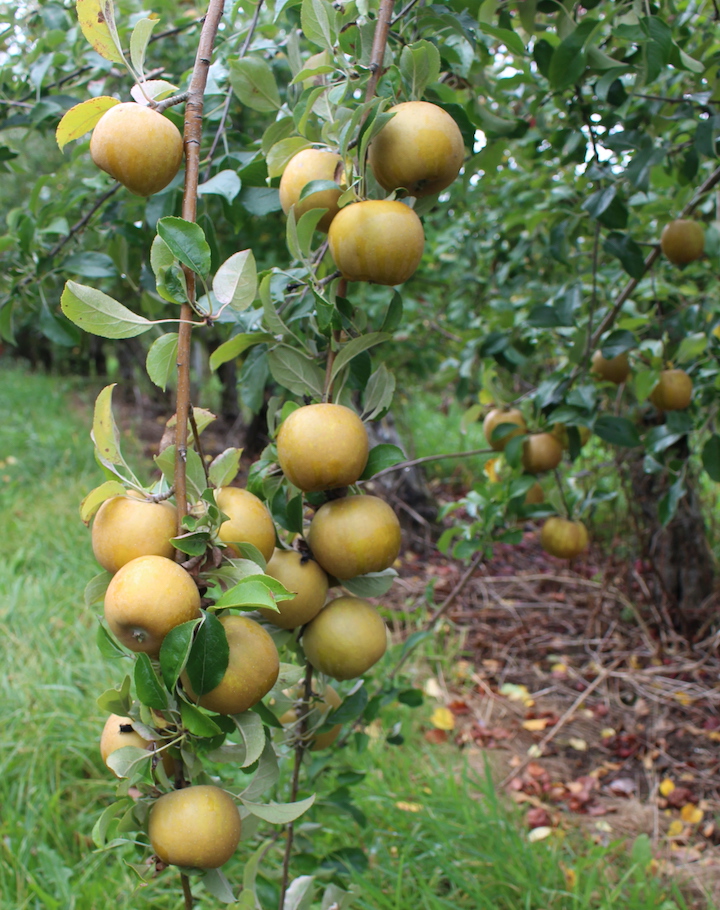
BUT RECENT TRENDS hint at more frequent and widespread threats and disruptions. The year 2023 was the second time in less than a decade that most of New England’s peach crop was wiped out. Less hardy than apples and blooming earlier, peaches are more vulnerable to cold and frost.
Some changes seem innocuous enough. Apple growing season is beginning sooner and lasting longer, for instance. A grower now in his 80s remembers spring bloom peaking around Memorial Day as a young man in central Massachusetts. Peak bloom is now around Mother’s Day in much of New England — about two weeks sooner than in the not-too-distant past.
Until recently, McIntosh apples were usually not ripe until after Labor Day, around September 10. Now, in many places, Macs are ready to pick before Labor Day, a week earlier.
The harvest season is longer in many places, too. It used to be that Granny Smith apples were hard to find in New England due to their long growing season, for example. Now, many orchards grow them, and other late-season varieties are harvested into November.
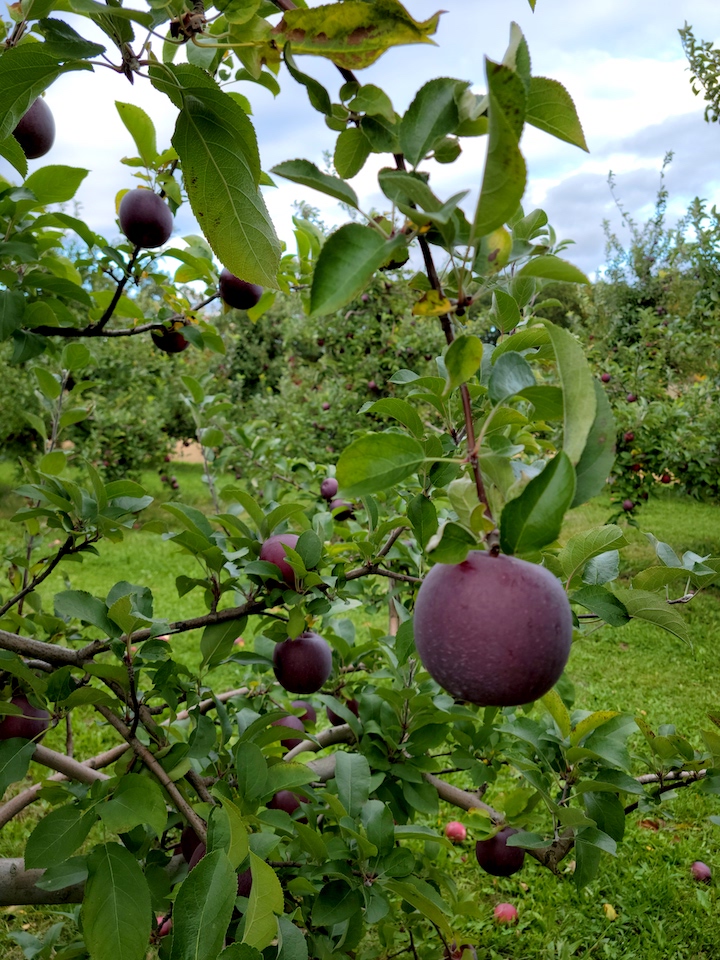
BUT THE CURRENT, EXTENDED WARM SPELL is alarming for orchards in two ways. If unseasonably warm temperatures continue for too long, the peach and apple trees could be fooled into opening their flower buds prematurely, extending the period that they will be vulnerable to frost, increasing the chances that the buds will be killed or damaged. Scenarios like last year’s could become more common.
The sudden spikes and dips in temperatures are bad for fruit trees, too. Winter is a time for the trees to rebuild their strength from the previous year’s harvest before beginning the next. The trees recover best when they get a deep winter’s sleep, without many fluctuations. They prefer a steady dormant state.
NEW ENGLAND’S GROWERS are a resilient bunch, skilled at adapting to poor weather. Despite the difficulties that made for a smaller crop region-wide in 2023, there are still plenty of locally grown apples in supermarkets, winter farmer’s markets, and orchard stores.
If you are looking for New England apples, though, beware the splashy displays dominating the produce aisles. Most new varieties arrive with big budgets and fancy names, but they cannot be grown locally due to trademark restrictions. If you don’t recognize the apple’s name, there’s a good chance New England’s growers are prohibited from growing it.
Many of these unfamiliar varieties from around the globe are built to travel, overly sweet, with dense flesh. While perfectly fine, they lack the distinctive flavors and textures of New England-grown apples.
As we bask in this temporary respite from winter, let’s hope the warm weather does not continue for so long that it threatens the 2024 crop.
* * *
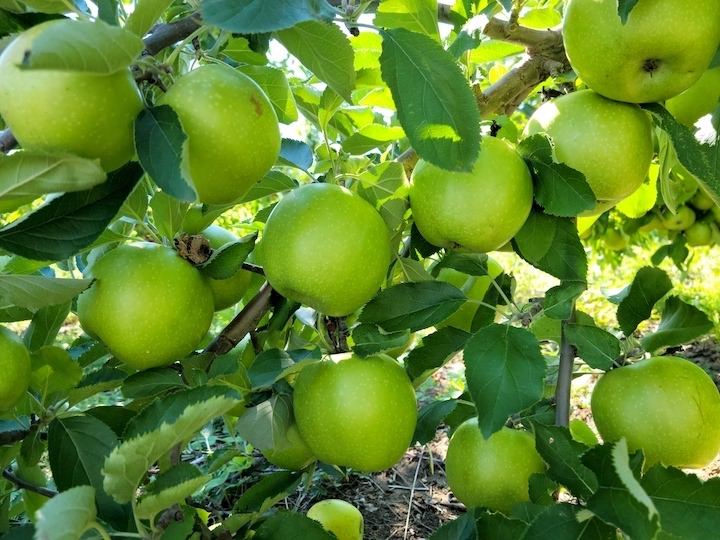
AT HOME, keep your apples cold, too. If left at room temperature they will continue to ripen, gradually losing some of their flavor and crispness.
Apples look great in a bowl on the table. Just remember to return them to the refrigerator overnight.
